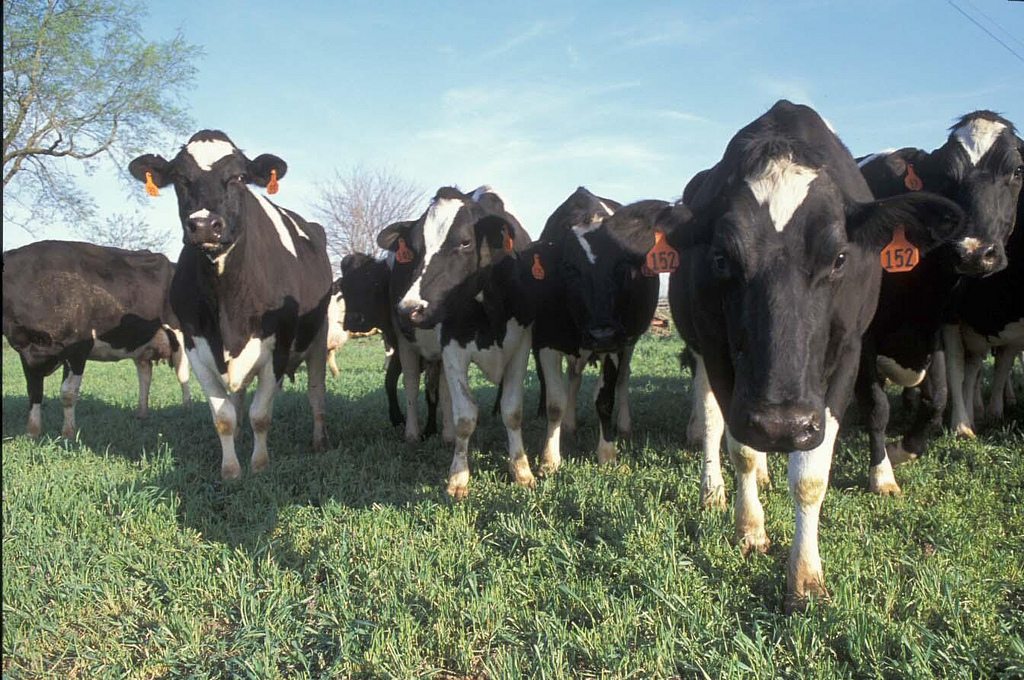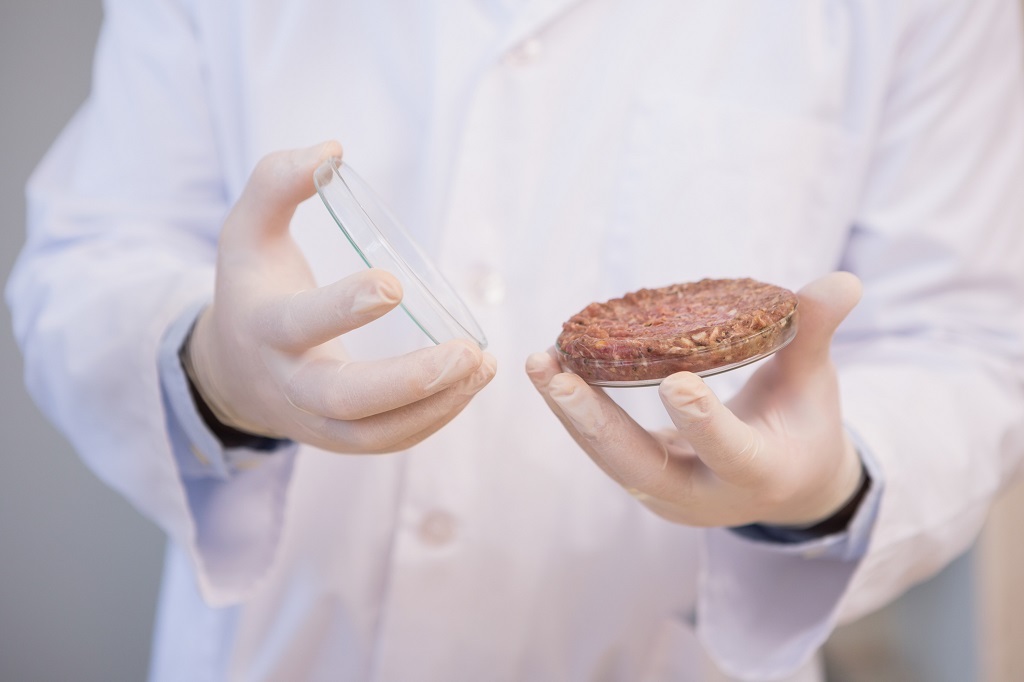Update, August 1, 2018, 3:45 p.m.: On Thursday, the Senate rejected an attempt to block the FDA from going after plant-based milks in a 14-84 vote, Roll Call reports. Utah Senator Mike Lee had previously introduced an amendment to the 2019 spending bill that would have prevented the agency from studying the use of the word “milk.”
Some people don’t know when to leave well enough alone.
You probably have your own list, but mine currently is led by Scott Gottlieb, commissioner of the Food and Drug Administration (FDA). Here’s a man with regulatory authority over products that make up something like one-fifth of the U.S. gross domestic product. He can pick his fights. He could go after the high price of prescription drugs (largely hopeless, but we’d all appreciate the effort). He can crack down on false health claims by the supplement industry. He could use the agency as a bully pulpit to harass bullshit health gurus. (For the record, I don’t actually want Gwyneth Paltrow to serve hard time in a maximum-security federal prison, no matter what I might have said in the past. Dr. Oz, maybe.) He could actually conclude the process of deciding what “natural” means in regard to food.
With all those choices before him, Gottlieb has chosen instead to go after plant-based milks. It’s not going to go well, but that seems to be a prerequisite for any government action these days. Scott, you know that scene in the slasher movies where the teenagers say, “Let’s split up and explore this spooky old house”? That’s you.
“And so the question becomes if we’ve been enforcing our own standards of identity. The answer is probably no.”
It’s simple, right? There are clear standards, and FDA, for whatever reason has failed to enforce them. Gottlieb’s suggesting that we’re just going to shift the system so it will work the way it was always supposed to work—and the fact that the shift is exactly what’s been demanded by a powerful industry group is just a coincidence.
Let’s call shenanigans on the whole thing.
Identity politics for food
It’s true that, under the Food, Drug, and Cosmetics Act (FDCA), FDA has the right to regulate what things are called in the marketplace. (Well, most things. By statute, it’s not allowed to set a standard of identity for butter or for fresh or dried fruits or vegetables except avocados, cantaloupes, citrus fruits, and melons.) But don’t get the wrong impression. It’s not like there’s a nice, tidy list of every product on the market with clear, bright-line definitions. U.S. standards of identity are kind of a mess. FDA maintains some, USDA has others (mostly products that contain meat—canned beef stew and things like that). The standard for butter (“For the purposes of the Food and Drug Act . . . ‘butter’ shall be understood to mean the food product usually known as butter . . .”) is tucked off in Chapter 9, Subchapter II of the FDCA itself.
And the standards pretty clearly weren’t designed for the purposes Gottlieb and the milk lobby want them to be used for. They’re not so much about defining exactly what a product is and isn’t; they’re about stating how far manufacturers are allowed to go in monkeying with it.
Take the milk standard. A lot of folks in the last few days have quoted the first bit: “Milk is the lacteal secretion, practically free from colostrum, obtained by the complete milking of one or more healthy cows.” That’s already problematic, as we’ll see. But here’s how it goes on: “Milk that is in final package form for beverage use shall have been pasteurized or ultrapasteurized, and shall contain not less than 8 1⁄4 percent milk solids not fat and not less than 3 1⁄4 percent milkfat. Milk may have been adjusted by separating part of the milkfat therefrom, or by adding thereto cream, concentrated milk, dry whole milk, skim milk, concentrated skim milk, or nonfat dry milk. Milk may be homogenized.” Then it’s on to the list of things you can add to milk – vitamins, colorings, flavorings, juice.
 .
. Photo by Taylor Kiser, graphic by NFE
You can tell where the thinking went in: The emphasis is clearly on how milk products can and can’t be formulated. It wasn’t in working out all the ways the word “milk” would might be used in the marketplace.
What’s my name?
You’ll notice that FDA’s definition of milk only includes cows. But elsewhere in the regulations, FDA sets standards for cheeses, such as mozzarella and romano, that can be made using milk from water buffalo and sheep. The source of that milk, of course, would have to be included on the product’s label. But if processors aren’t allowed to use the word “milk”—the official standard only refers to cows, after all—what are they supposed to call it?
Similar problems arise for things like gluten-free bread and rice noodles. Noodles, the standard says, must be made of “semolina, durum flour, farina, flour, or any combination of two or more of these, with liquid eggs, frozen eggs, dried eggs, egg yolks, frozen yolks, dried yolks, or any combination of two or more of these, with or without water.” And while FDA has a standard for rice flour, its separate from the standard for flour. So rice noodles can’t be noodles. And for similar reasons, gluten free bread can’t be bread. What are we supposed to say? “Long, skinny rice thingies”? “Non-wheat grain clumps”?
In a similar case against multiple soy and almond products, the court first explained what the law very clearly sates: If FDA gives a product a name, you have to use it. If not, you use the common name that accurately describes the product. “Here,” the decision continued, “the Court agrees with Defendants that the names ‘soymilk,’ ‘almond milk,’ and ‘coconut milk accurately describe Defendants’ products. As set forth in the regulations, these names clearly convey the basic nature and content of the beverages, while clearly distinguishing them from milk that is derived from dairy cows. Moreover, it is simply implausible that a reasonable consumer would mistake a product like soymilk or almond milk with dairy milk from a cow.”
It’s hard to disagree, though you can expect to hear the dairy industry do so at length in the months to come. People intuitively understand terms like “coconut milk”—and have since the latter 17th Century if Merriam Webster is to be believed. We aren’t confused (at least not for long) by the likes of beef tea and rocky mountain oysters and spaghetti squash and even city chicken.
 .
. Photo by Alex Block, graphic by NFE
We fill our market baskets with products that FDA has never gotten around to defining (kombucha, anyone?) and we do just fine. As even Scott Gottlieb admits, FDA may say milk comes only from cows, but the dictionary says it also comes from nuts.
Here’s the thing: If FDA really wanted to block the use of the word “milk” to describe things like soymilk, they might have had a chance if they had acted before about 1980, when the terminology really started to take off. But they didn’t. They could have been updating the standards of identity all along, adding new definitions as they became necessary, and addressing potential conflicts. But that didn’t happen. It’s as if, having started the project, the agency just walked away from it.
How peanut butter changed the FDA
Actually, that’s exactly what some scholars say happened in the wake of the long and bitter struggle that led to the creation of the peanut butter standard in 1971. You can read all about it here, in a remarkable article by Angie M. Boyce.
The flap was perhaps most noteworthy because it saw the emergence of a new kind of food activist in the form of Ruth Desmond, a housewife, grandmother, and founder of the Federation of Homemakers. By all accounts, Desmond was a smart cookie, though willing to play the part of an ordinary grandma who wanted nothing but to keep her grandkids’ lunch as simple as possible. Desmond personalized the standards battle, stood up for a standard that neither FDA nor industry particularly wanted to hear, and contributed to the fact that the standards eventually took 12 years to be finalized. As some historians tell the tale, after the peanut butter battle, FDA decided that standards of identity weren’t the way to go. Instead of trying to legislate recipes and guarantee nutrition through identity, the agency shifted to the style of label-driven regulation that we’re familiar with today.
That style has its own problems, of course, but it does get things done by basically delegating the most intractable conflicts to somebody else—the courts, the consumer, whoever is willing to take them on. And that means FDA itself doesn’t have to resolve all the fights.
In case you were wondering, I have no dog in this fight. I don’t drink milk—not cow milk, not soy milk, not almond milk. What do I put on my cereal, you ask? I don’t eat cereal. I like oatmeal. Sometimes with berries, but more often risotto style, with butter and some grated romano cheese. Great stuff, romano. It’s made from the lacteal secretions of sheep, which is also great stuff. Somebody, someday, should give it a name.











